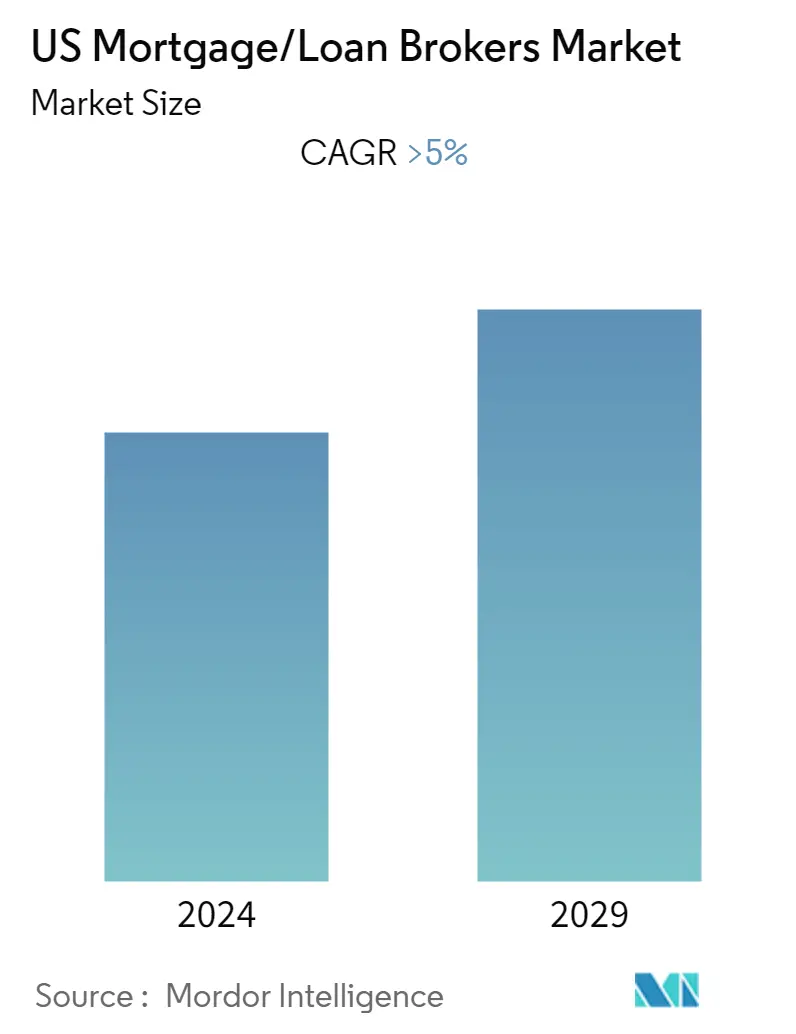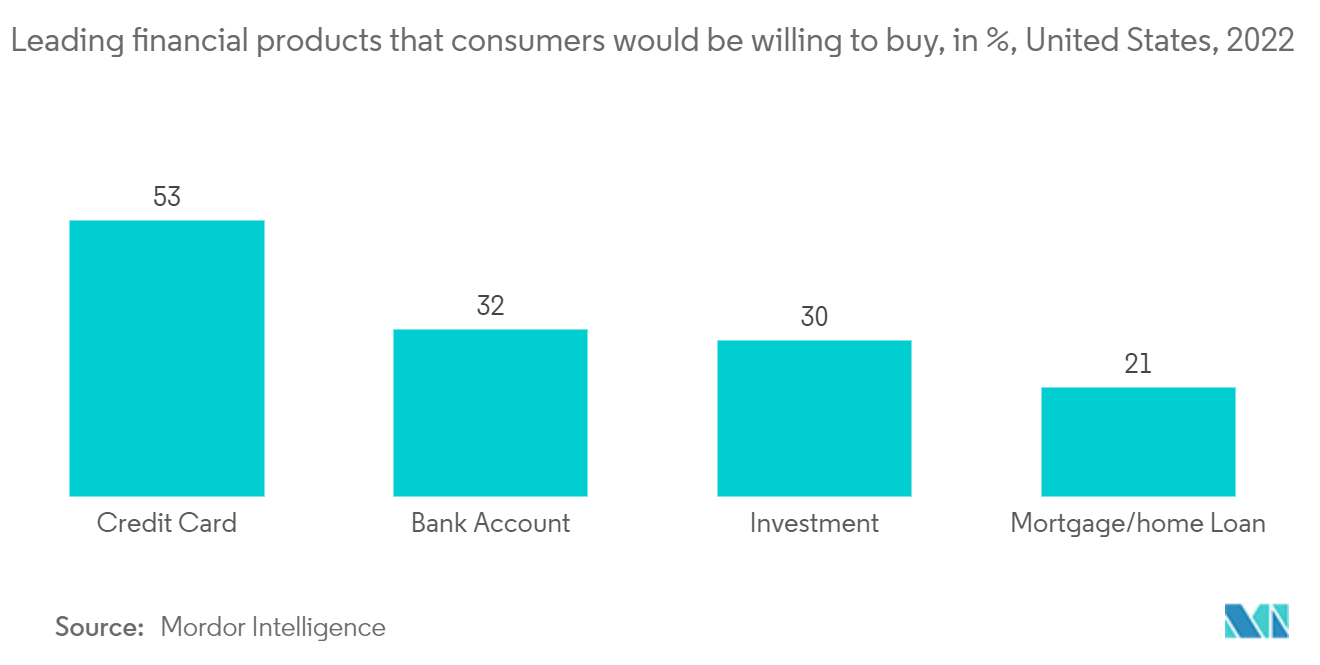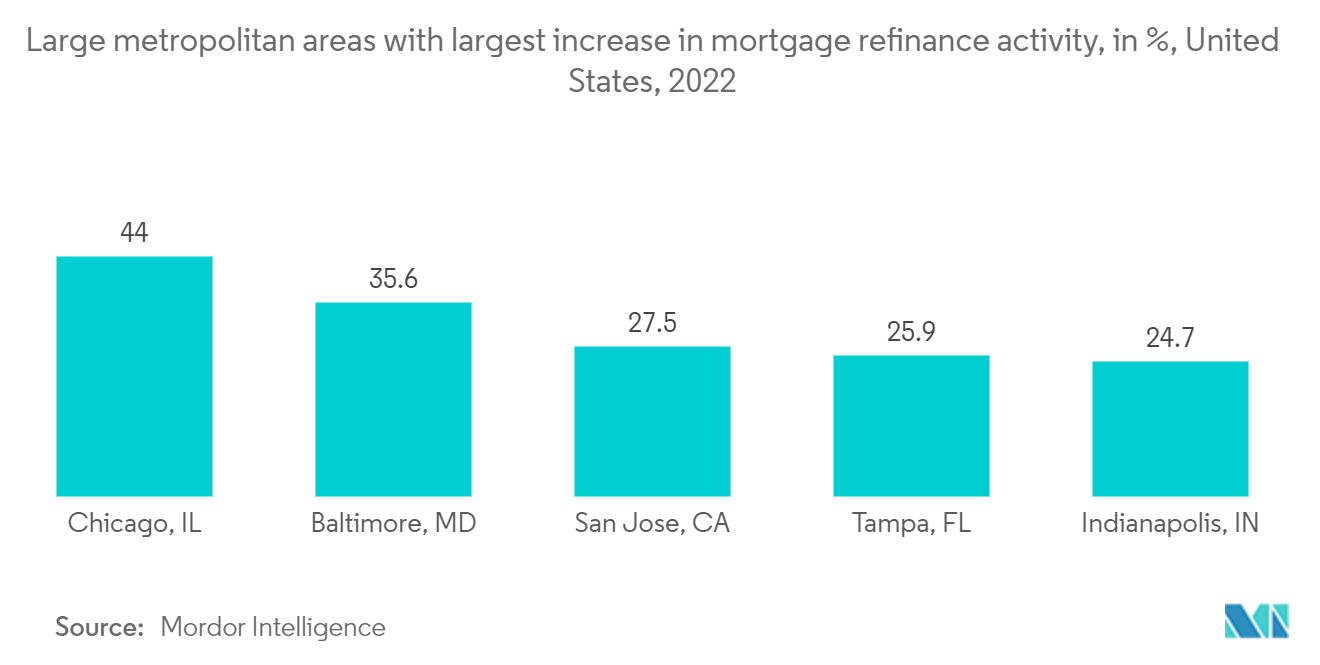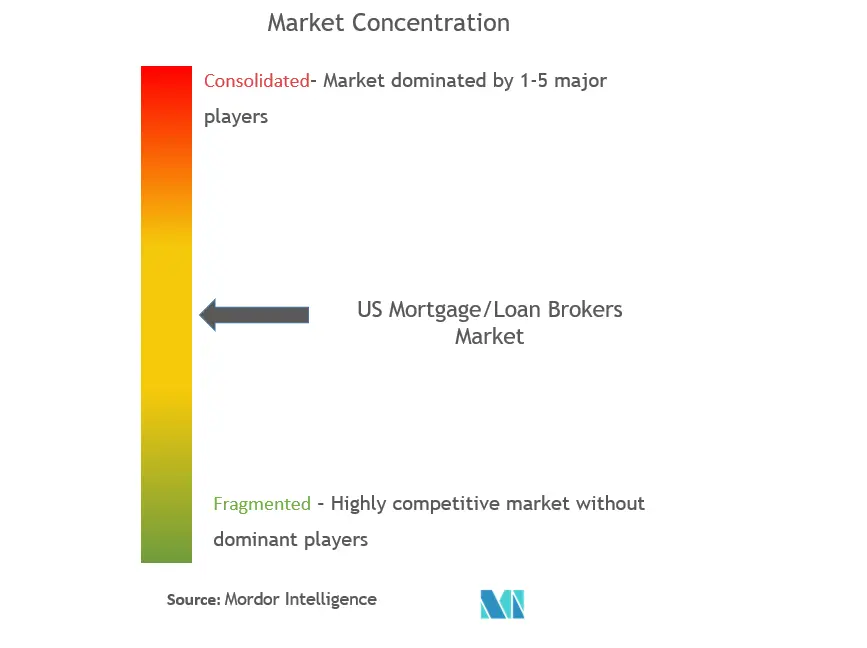US Mortgage/Loan Brokers Market Size

| Study Period | 2019 - 2029 |
| Base Year For Estimation | 2023 |
| Forecast Data Period | 2024 - 2029 |
| Historical Data Period | 2019 - 2022 |
| CAGR (2024 - 2029) | 5.00 % |
| Market Concentration | Medium |
Major Players_-_Copy.webp)
*Disclaimer: Major Players sorted in no particular order |
US Mortgage/Loan Brokers Market Analysis
The US Mortgage/Loan Brokers Market is expected to register a CAGR of greater than 5% during the forecast period(2024-2029).
A mortgage or loan broker is a specialist who serves as a point of contact between lenders who authorize loans and companies looking to borrow money. Brokers search for the finest financial rates and terms, whether their customer wants to fund a loan or launch a new business. They bargain with lenders to secure loan approval or look into other options. A bank loan officer offers mortgage rates and programs from just one company. In contrast, a mortgage broker works on behalf of a borrower to locate the best lending programs and/or lowest rates offered by several lenders.
The COVID-19 pandemic's effects on the financial services industry, personal wealth, and debt levels got worse. Mortgage debt was the biggest source of debt for individual homeowners, and it had the biggest effect on their finances and ability to maintain their standard of living if they lose their job or have their pay cut. Because mortgages are often the biggest asset in lenders' retail banking portfolios, changes in mortgage originations, repayment plans, and default rates will have a big effect on the lenders' profits and cash flow.
The loan broker market is expected to grow over the next five years as consumer incomes and access to credit both rise. In the last five years, consumers have spent more money because the economy has been good and interest rates have been low. As a result, more people needed mortgages and auto loans to buy homes and cars. As people spend more money on expensive things, the need for loan brokering services is likely to grow. The main thing that loan brokers do is help people get loans from both lenders and borrowers. Brokers work for both businesses and individual people, but most of their work is in the mortgage brokering industry. In the past, the sector grew along with the US economy, even though things were uncertain during the housing crisis in 2008. In recent years, the loan broker industry has been helped by rising consumer confidence and low interest rates. A further indication of rising consumer demand is the housing market's increased activity.
US Mortgage/Loan Brokers Market Trends
Adoption of the New Technologies Driving the Market
Higher interest rates and less demand have also led to a drop in the number of people who use mortgage lenders. On the other hand, improvements in technology have made people expect more from home loans. A more competitive business climate is the end effect. Mortgage businesses must find a means to meet potential borrowers' demands for quicker processing times and an easy-to-understand process to maintain profitability.
However, what the consumer expects based on their prior experience with digital transactions elsewhere may not always line up with what the mortgage business can or should give. The gap between what people want and what they can do now can be closed by improving communication. Even though mortgage transactions are increasingly going digital, consumers still value personal service and want to be informed as they complete the process.
Mortgage lenders are utilizing application programming interfaces (API) to transform business procedures. Employers are working hard to stay on top of the most recent technological trends, especially in the areas of workflow automation, data accuracy assurance, and facilitating compliance. According to Leung, inefficient back-office operations have an impact on loan processing times and loan officer morale, as well as the overall saleability of loan products.

Extending RefiNow's Eligibility Will Increase the Volume of Mortgage Refinances
The Federal Housing Finance Agency (FHFA) has widened the eligibility requirements for borrowers for the RefiNow and RefiPossible programs from Freddie Mac and Fannie Mae.Before, applicants for these programs had to have an area median income (AMI) of at least 80%. The most recent FHFA notice has increased this cap to 100%. Through these initiatives, lenders are required to grant borrowers a USD 500 credit if an appraisal is necessary to determine the value of their home. Pay Stubs and a year's worth of personal tax returns are required to verify the income of the borrowers.
These schemes, which guarantee a 0.5% reduction in the mortgage interest rate, are anticipated to encourage the refinancing of existing mortgages. According to Fannie Mae, the value of mortgage refinancing will cross USD 1.3 trillion in 2023.

US Mortgage/Loan Brokers Industry Overview
The report covers the major international players operating in the US mortgage/loan brokers market. Competition within the loan brokers industry is high as brokers are reliant upon connections with the top realtors and lenders in the area they serve. Some of the major players are Wells fargo, Bank of America, Quicken loans etc.
US Mortgage/Loan Brokers Market Leaders
-
Quicken Loans
-
Wells Fargo
-
United Shore Financial Services
-
Bank of America
-
Fairway Independent Mortgage
*Disclaimer: Major Players sorted in no particular order

US Mortgage/Loan Brokers Market News
- November 2022: A digital home equity line of credit was introduced by loanDepot, one of the country's biggest non-bank retail mortgage lenders, against the backdrop of inflation and rising consumer debt.
- October 2022: Pennymac Financial Services launched POWER+, its next generation broker technology platform. Brokers will now have more speed and control over the mortgage process to deliver an exceptional experience to their customers and referral partners.
US Mortgage/Loan Brokers Market Report - Table of Contents
1. INTRODUCTION
- 1.1 Study Assumptions and Market Definition
- 1.2 Scope of the Study
2. RESEARCH METHODOLOGY
3. EXECUTIVE SUMMARY
4. MARKET DYNAMICS AND INSIGHTS
- 4.1 Market Overview
- 4.2 Market Drivers
- 4.3 Market Restraints
- 4.4 Insights on Various Regulatory Trends Shaping Mortgage Brokers Market
- 4.5 Insights on the impact of technology and innovation in the Mortgage Brokers Market
-
4.6 Industry Attractiveness - Porter's Five Forces Analysis
- 4.6.1 Bargaining Power of Buyers
- 4.6.2 Bargaining Power of Suppliers
- 4.6.3 Threat of New Entrants
- 4.6.4 Threat of Substitutes
- 4.6.5 Intensity of Competitive Rivalry
- 4.7 Impact of COVID-19 on the Market
5. MARKET SEGMENTATION
-
5.1 Component
- 5.1.1 Products
- 5.1.2 Services
-
5.2 Enterprise
- 5.2.1 Large
- 5.2.2 Small
- 5.2.3 Medium-sized
-
5.3 Application
- 5.3.1 Home Loans
- 5.3.2 Commercial Loans
- 5.3.3 Industrial Loans
- 5.3.4 Vehicle Loans
- 5.3.5 Loans to Government
- 5.3.6 Other Applications
-
5.4 End - User
- 5.4.1 Business
- 5.4.2 Individuals
6. COMPETITIVE LANDSCAPE
- 6.1 Market Concentration & Overview
-
6.2 Company Profiles
- 6.2.1 Quicken Loans
- 6.2.2 Wells Fargo
- 6.2.3 United Shore Financial Services
- 6.2.4 Bank of America
- 6.2.5 Fairway Independent Mortgage
- 6.2.6 Chase
- 6.2.7 J P Morgan
- 6.2.8 Morgan Stanley
- 6.2.9 Caliber Home Loans
- 6.2.10 US Bankcorp*
- *List Not Exhaustive
7. MARKET OPPORTUNITIES AND FUTURE TRENDS
8. DISCLAIMER AND ABOUT US*
** Subject To AvailablityUS Mortgage/Loan Brokers Industry Segmentation
A mortgage broker is a middleman who helps people or businesses with the mortgage loan application process. In essence, they build connections between mortgage lenders and borrowers without investing any of their own money. The report provides a comprehensive background analysis of the US Mortage/Loan Brokers market, covering the current market trends, restraints, technological updates, and detailed information on various segments and the industry's competitive landscape. Additionally, the COVID-19 impact has been incorporated and considered during the study.
The United States Mortgage/Loans Broker Market Is Segmented By Component (Products And Services) And By Enterprise Size (Large, Small, And Medium-Sized). By Application (Home Loans, Commercial And Industrial Loans, Vehicle Loans, Loans To Governments, And Others), And By End-User (Businesses And Individuals). The Report Offers Market Size And Forecasts For The Us Mortgage/Loans Market In Value (USD) For All The Above Segments.
| Component | Products |
| Services | |
| Enterprise | Large |
| Small | |
| Medium-sized | |
| Application | Home Loans |
| Commercial Loans | |
| Industrial Loans | |
| Vehicle Loans | |
| Loans to Government | |
| Other Applications | |
| End - User | Business |
| Individuals |
US Mortgage/Loan Brokers Market Research Faqs
What is the current US Mortgage/Loan Brokers Market size?
The US Mortgage/Loan Brokers Market is projected to register a CAGR of greater than 5% during the forecast period (2024-2029)
Who are the key players in US Mortgage/Loan Brokers Market?
Quicken Loans, Wells Fargo, United Shore Financial Services, Bank of America and Fairway Independent Mortgage are the major companies operating in the US Mortgage/Loan Brokers Market.
What years does this US Mortgage/Loan Brokers Market cover?
The report covers the US Mortgage/Loan Brokers Market historical market size for years: 2019, 2020, 2021, 2022 and 2023. The report also forecasts the US Mortgage/Loan Brokers Market size for years: 2024, 2025, 2026, 2027, 2028 and 2029.
US Mortgage/Loan Brokers Industry Report
Statistics for the 2024 US Mortgage/Loan Brokers market share, size and revenue growth rate, created by Mordor Intelligence™ Industry Reports. US Mortgage/Loan Brokers analysis includes a market forecast outlook to for 2024 to 2029 and historical overview. Get a sample of this industry analysis as a free report PDF download.



